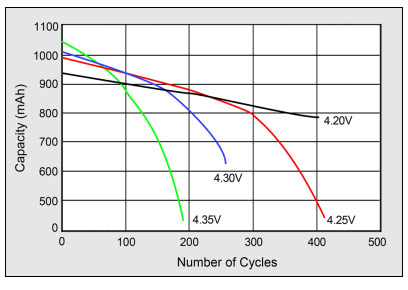The author of this article doesn't have a lot of respect for his suppliers - but he also makes some very bold and potentially very useful statements about prolonging battery life - should we trust what he says?
How to Prolong Lithium-based Batteries - Battery University
... Lithium-ion suffers stress when exposed to heat and kept at a high charge voltage. ... anything that dwells above 30°C (86°F), and ... higher than 4.10V/cell. ... Exposing the battery to high temperature and being at full state-of-charge for an extended time can be more damaging than cycling. Manufacturers do not like to talk about these environmental conditions and release information only in confidence when so requested.
... Most packs last three to five years, less if exposed to high heat and if kept at a full charge. ... The worst condition is keeping a fully charged battery at elevated temperatures, which is the case when running a laptop on the power grid. Under these circumstances the battery will typically last for about two years, whether cycled or not. ... Satellites and electric vehicles are examples where longevity is important.
... At a charge to 4.10V/cell, the battery holds a capacity that is about 10 percent less than going all the way to 4.20V/cell. In terms of optimal longevity, a charge voltage limit of 3.92V/cell works best but the capacity would be low. Besides selecting the best-suited voltage thresholds, it is also important that the battery does not stay in the high-voltage stage for a long time and is allowed to drop after full charge has been reached.
The voltage threshold of commercial chargers cannot be changed, and making it adjustable would have advantages, especially for laptops as a means of prolonging battery life. When running on extended AC mode, the user would select the "long life" mode and the battery would charge to only, say, 4.05V/cell. This would get a capacity of about 80 percent. Before traveling the user would apply the "full charge mode" to bring the charge to 4.20V/cell. ... A slightly larger pack compensates for the reduced runtime. Another option to extend battery life is removing the pack from the laptop when running on the power grid.
If the above is correct, then it should be worthwhile (for people like me who don't really do long journeys) to partially charge the battery.
If I've got it all correct, how would I arrange 80% charge? Use a timer, only one or two hours at a time? Charge only until the Green indicator light on top of the battery has started to appear?
How to Prolong Lithium-based Batteries - Battery University
... Lithium-ion suffers stress when exposed to heat and kept at a high charge voltage. ... anything that dwells above 30°C (86°F), and ... higher than 4.10V/cell. ... Exposing the battery to high temperature and being at full state-of-charge for an extended time can be more damaging than cycling. Manufacturers do not like to talk about these environmental conditions and release information only in confidence when so requested.
... Most packs last three to five years, less if exposed to high heat and if kept at a full charge. ... The worst condition is keeping a fully charged battery at elevated temperatures, which is the case when running a laptop on the power grid. Under these circumstances the battery will typically last for about two years, whether cycled or not. ... Satellites and electric vehicles are examples where longevity is important.
... At a charge to 4.10V/cell, the battery holds a capacity that is about 10 percent less than going all the way to 4.20V/cell. In terms of optimal longevity, a charge voltage limit of 3.92V/cell works best but the capacity would be low. Besides selecting the best-suited voltage thresholds, it is also important that the battery does not stay in the high-voltage stage for a long time and is allowed to drop after full charge has been reached.
The voltage threshold of commercial chargers cannot be changed, and making it adjustable would have advantages, especially for laptops as a means of prolonging battery life. When running on extended AC mode, the user would select the "long life" mode and the battery would charge to only, say, 4.05V/cell. This would get a capacity of about 80 percent. Before traveling the user would apply the "full charge mode" to bring the charge to 4.20V/cell. ... A slightly larger pack compensates for the reduced runtime. Another option to extend battery life is removing the pack from the laptop when running on the power grid.
If the above is correct, then it should be worthwhile (for people like me who don't really do long journeys) to partially charge the battery.
If I've got it all correct, how would I arrange 80% charge? Use a timer, only one or two hours at a time? Charge only until the Green indicator light on top of the battery has started to appear?







